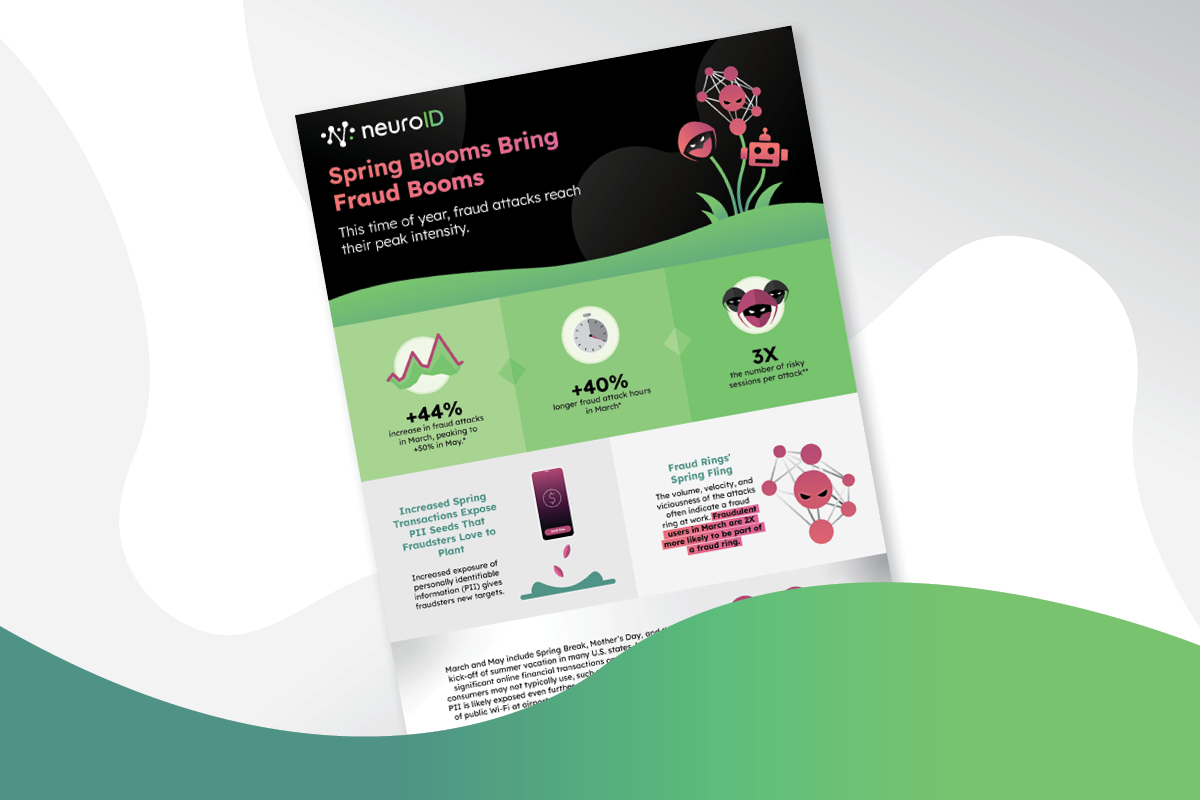Skip to content
Blog

Apr 23, 2024
Your Q1 Fraud Analysis: Emerging 2024 Attack Trends to Watch For
Read More
Blog

Apr 17, 2024
Who is Winning in the Race for GenAI Weaponization—Fraudsters or Fraud Teams?
Read More
Blog

Apr 05, 2024
3 Takeaways from MRC Vegas & Navigating the Evolving eCommerce Landscape
Read More
Customer Story

Mar 22, 2024
NeuroID Saves Elevate $1-2M a Year Through Accurate Fraud Detection and Operational Efficiency Improvements
Read More
Blog

Mar 15, 2024
Our Experts and FinTech Veterans Dispute Real-Time Money Movement’s Fraud Myths
Read More
Fact Sheet

Mar 14, 2024
Spring Blooms Bring
Fraud Booms
Read More
Blog

Mar 07, 2024
There’s a Huge Fraud Spike Coming. Are you Ready?
Read More
Blog

Feb 26, 2024
How GenAI is Making Fraud Bots More Dangerous (And What You Can Do About it)
Read More
Blog

Feb 23, 2024
3 Reasons NeuroID is a Must-See at Fintech Meetup
Read More









